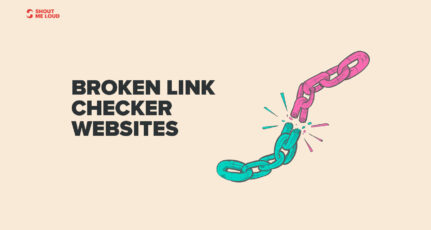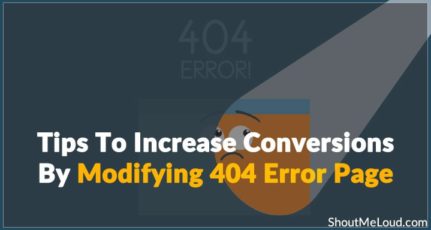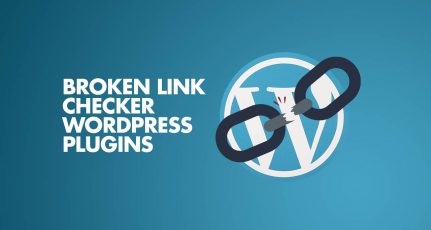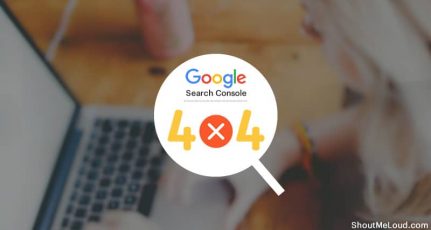
“Error 404 – Page Not Found” – This is one of the most common web errors we see in our day-to-day Internet surfing. We know that error pages offer an obviously negative user experience, but how do they impact search engines?
- Are 404 pages bad for SEO?
- Do search engines penalize websites with too many 404 status code pages?
In this article, I will look at 404 error pages from the perspective of both users and search engines, and will recommend some of the best practices that one can follow to improve their 404 error pages.
Most common reasons for 404 error pages:
404 errors can happen for multiple reasons. Some of the most common are as follows:
- You change your permalink or the link structure of your website. (This mostly happens when changing design, or changing permalinks.)
- You removed content from your website.
- Somebody linked your website to a misspelled link or to an otherwise incorrect link.
When a user or search engine bot requests access to a bad page on a server, web servers usually reply with an HTTP status code of 404, to tell the user that the page doesn’t exist on the server.
Usually search engine bots are smart, and they don’t care much about 404 error pages. For the real-life user, however, aa 404 error page presents a bad user experience, and in response the user usually goes back and follows another link.

Another disadvantage is of the 404 error is that it can cause you to miss out on important links from other domains. This is not something that I worry much about, but when a user lands on a website by way of a referral link and sees a 404 page, it usually makes them go away.
Finding 404 links and fixing them for users as well as for SEO:
Let’s figure out what you can do with 404 error pages, and how to deal with them to your best advantage.
We first need to identify any 404 pages on your blog. The best place to start is with the Google search console (Also known as Google search console). Login to your Webmaster tool dashboard > Crawl errors > Not found >

Click on any of the links and you will see “linked from” which will give you an idea of where these pages are linked from. This is also handy for finding potential link juice on your website.
If you are using WordPress, you can use a redirection plugin to monitor and redirect 404 error pages from your dashboard. (This is what I use here at ShoutMeLoud). Once you have a list of 404 pages for your domain, here are several solutions for dealing with them:
- 301 Redirect the link to the most relevant post/article or category. If there is no relevant article or category, follow the next step.
- If the error is arising due to a misspelled link from another domain, you can either ask the webmaster to update the link, or you can use the 301 redirection.
- If no relevant article is on your website related to the 404 link, simply let it be. Google will automatically de-index such pages eventually.
- You can also manually de-index such pages from the web index using the webmaster removal tool. However, if you have thousands of such pages, it will be quite a task for you. So I would suggest either the previous suggestion or the following one.
- Use a custom 404 page to spice up your page. You can add a search box, show articles relevant to the user’s search query, or show some of the most popular articles from your portal. The whole idea is to give a good user experience.
Another thing to keep in mind is that if you have a portal with thousands of 404 pages, you do not want the search engine bots to waste their limited crawling resources on such pages.
For this reason, it is best to re-direct whenever possible or to block bots from accessing these pages using Robots.txt, and remove them using the Google Webmaster tool.
This is ideal particularly when you have removed any directory or category/tag pages from your portal.
- What is Google crawling and indexing
- Useful tips to increase Google crawl rate
- Understand Google Webmaster tool crawl errors and fixes
404 pages are not SEO enemies, but it’s not a good idea to have a long list of 404 pages on your blog. My main concern with 404 pages is the poor user-experience they create. With search engine optimization revolving around offering a good user experience, this is an issue we do want to make the effort to address.
Related reading:
- Learn about soft 404 error
- Use the Broken Link Checker plugin to find broken links on your WordPress blog
How do you handle 404 pages on your blog or website? Do you set a redirection or show a custom 404 error page? Let us know using the comments section below.
If you find the information in this post useful, please share it with your friends and colleagues on Facebook, Twitter and LinkedIn.






I must say your post has been very useful. i recently had an error 404 post on my blog and fixed it after reading this.
I migrated my site and found that there are hundreds of broken links in my google webmaster dashboard. I will now try to remove them manually. Thanks for the informative post.
Thanks for this article, I am new to this field and i don’t know about 404. But when i searched on webmaster tools i found lots of 404 errors. Now by using the plugin i fixed some of them and i think now my site is slowly gaining. Thanks for this.
Thank you Harsh for sharing such informative content on 404 error !
You are welcome, Ankur
Hello Harsh,
i am getting daily soft 404 errors. I dont know why they increasing lots of junk keywords in webmaster. I have checked the site using site:website-link and found 20-30 eCommerce link on my site which i have redirect to 404 page. But still getting soft 404 errors. My organic ranking from 1st page to went down on 4th page for all keywords. Let me know the solution please.
Thanks for the post Harsh. I changed my domain name. After changing domain name all viewers from search engines to my blog were getting 404 error. But, thanks to Godaddy, I redirected my old domain name to New domain.
Indeed a Great post about 404 redirection.
It is said that 404 not found pages or broken pages aren’t good for any blog because It gives bad user experience and It also affects badly in search engine rankings.
Search engine like Google never wants to redirect their users to a page which shows not found errors. Right?
So It is must to redirect these 404 pages to either another relevant page or to homepage.
I can remember when I started my 1st blog then I didn’t have any idea that on which niche I should write. So I used to write on different different topics and later deleted those articles when move to another niche.
In this way, I created so many 404 not found pages in my blog and one day, I realized that Webmaster tools is showing so many not found errors.
When I saw that, I scared because I didn’t knew about these pages at that time. Then I did research and fixed those pages.
Thanks for sharing such a wonderful tutorial. 😀
Hi Harsh. I recently changed my domain name from .in to .com in Blogger. & it is indexed also. But my search results are still showing .in pages. when users click the pages they are getting 404 error. Please tell me how to do 301 redirection in blogger.
I can’t deny that you haven’t written informative article.
It is true that your article is very much helpful and informative.
As I had started my blog few months ago so I haven’t enough information about 404 error pages and that’s why, I had so many 404 errors on my blog and after reading this article, I get to know that how to deal with these not found errors.
If I am right then 404 pages are those where we don’t find any content except a 404 error message and It occurs If any writer deleted the existing content and the URL of that content remain indexed in search results.
I also heard that Google don’t like these pages so every webmaster should check out their website regularly for these errors to keep their website SEO friendly.
Thanks for sharing this article with us because It taught me that how I can handle these pages and keep my site at safer side. 😀
Hey I have Coupon site that may be hacked before and now I cleaned my site but in webmaster tool, crawl error section it look like 3000 pages with “404 status”
Can I redirect those pages to homepage using Link juice keeper Plugin?
Is there any harm that 3000 pages redirection to homepage?
Hi Harsh
I don’t know much about 404 error pages because I had started my blogging career recently.
But somewhere I read that If any blogger or writer deleted the existing web page then the URL of that web page becomes 404 URL and that page becomes 404 page.
It is also said that Google don’t like 404 page so I checked my site whether I had any 404 page or not then I found few of the 404 error pages on my site also.
But Now after reading this post, I can easily handle these pages.
Thanks for sharing such a helpful post with us. 😀
Hi,
I obviously have thousands of error pages on my blog because I changed my domain hoping that it was the reason behind my search traffic but it wasn’t (think). This error page of a thing has caused me a lot of mind disorderliness but with this, I think I have a solution. I would prefer using the first approach with the aid of 404 redirect plugin.